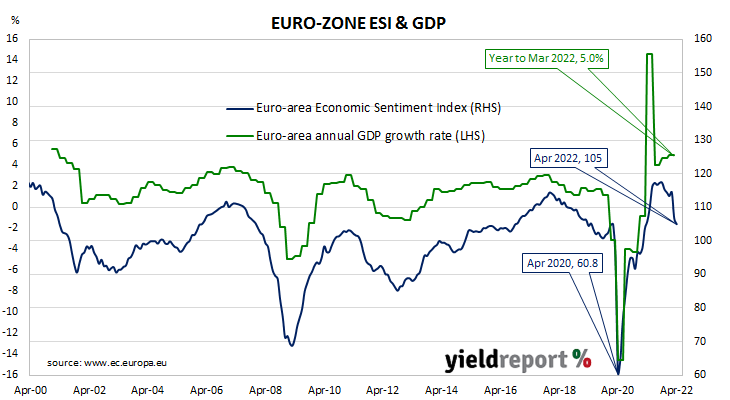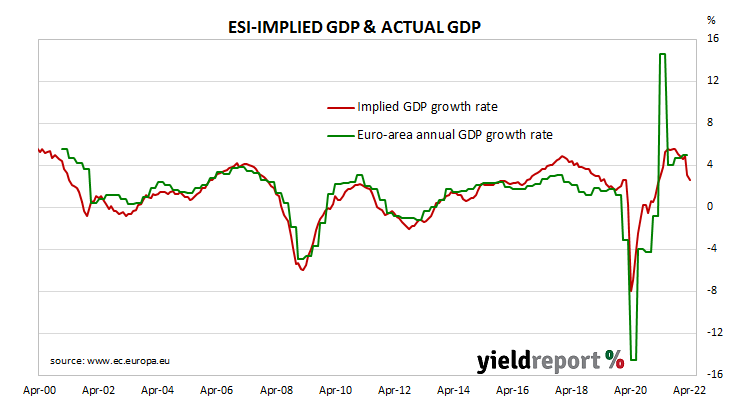Summary: Euro-zone composite sentiment index falls from 106.7 to 105.0 in April; below expectations; readings again down all sectors with the exception of services; down in three of four largest euro-zone economies; sovereign bond yields modestly higher; index implies GDP growth of 2.6%.
The European Commission’s Economic Sentiment Indicator (ESI) is a composite index comprising five differently-weighted sectoral confidence indicators. It is heavily weighted towards confidence surveys from the business sector, with the consumer confidence sub-index only accounting for 20% of the ESI. However, it has a good relationship with euro-zone GDP, although not as a leading indicator.
The ESI posted a reading of 105.0 in April, below the market’s expected figure of 108.0, as well as March’s revised reading of 106.7. The average reading since 1985 has been a touch over 100.
German and French 10-year bond yields finished the day modestly higher. By the close of business, the German bund yield had added 2bps to 0.96% and the French 10-year OAT yield had gained 4bps to 1.49%.
Again, confidence deteriorated in all sectors with the exception of services. On a geographical basis, the ESI fell in three of the euro-zone’s four largest economies, the exception being Italy.
End-of-quarter ESI readings and annual euro-zone GDP growth rates are highly correlated. This latest reading corresponds to a year-to-April GDP growth rate of 2.6%, down from March’s revised growth rate of 3.0%.



